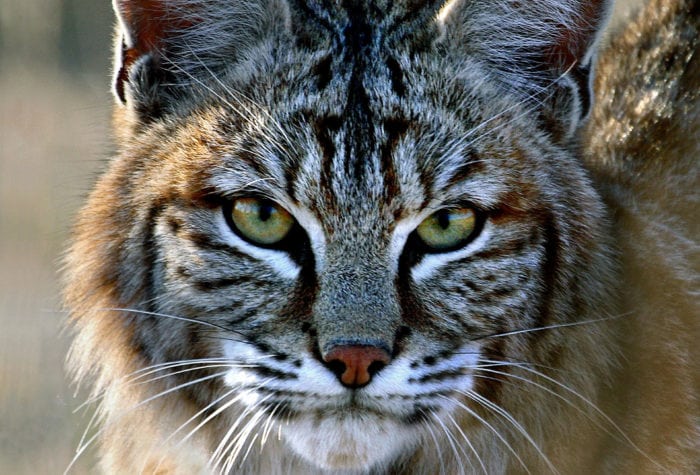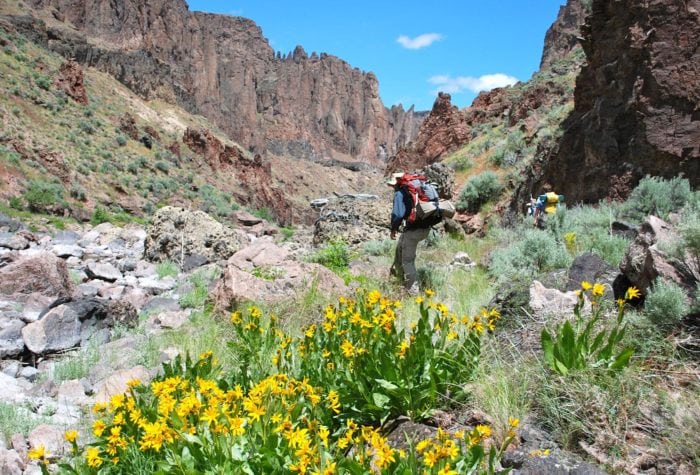Three Amazing High Desert Inhabitants
J. Hertz
The Flyer
Wilson’s Phalaropes are peach and gray shorebirds that breed in marshlands across the West that embark on a truly amazing journey each year.
But, first, to prepare for their southbound migration, Phalaropes will vortex feed, swimming in a tight circle to bring food to the surface. Phalaropes can double their weight in just a few weeks time by eating almost continuously, a process called hyperphagia. Sometimes, they eat and grow so much in those few weeks that they aren’t able to fly. (We can relate to this feeling.) When they do leave the lake, bound for South America, they will travel roughly 5,000 miles in a single push – thought to be done non-stop – and shed most of the weight they put on.
The Ancient
You know that saying “as old as the hills?” Well, Pacific lamprey are older.
Paleontologists have found Pacific lamprey fossils as old as 450 million years old, which means that this anadromous species that plies the rivers of Oregon’s high desert today predates dinosaurs … by more than 200 million years.
In the Columbia River Basin, the Yakama, Umatilla, and Nez Perce tribes place a high value on the Pacific lamprey as a cultural, spiritual, ceremonial, medicinal and subsistence resource since time immemorial, and it’s easy to see why this species has earned so much respect.
Unfortunately, the species that has endured volcanic eruptions and colossal floods has suffered dramatic population declines in the 150 years of the Anthropocene, as hydropower development has blocked fish passage and a variety of human activities, such as water diversions, construction, chemical treatment and mining, have degraded their natural habitat.
The Freezer
You may have heard these guys referred to – incorrectly – as a horned toad, but the proper name for this tiny lizard that rarely grows to more than seven centimeters in total length is the pygmy short-horned lizard.
And, here’s the crazy part: recent field studies have disclosed that short-horned lizards routinely hibernate by burying in sand just a few centimeters below the surface, freezing solid for months at a time. When the warmth of springtime arrives, the lizards thaw unharmed.
Remarkable for an ectothermic reptile at the Northern Great Basin’s latitude, the pygmy short-horned lizard has been recorded living in the stunted sagebrush and bunchgrass habitats of the region’s mountain summits at nearly 2400m elevation. In these zones that are snowbound for months on end, short-horned lizards spend the majority of the year in hibernation.
Oregon’s high desert remains a stronghold for the sagebrush steppe ecosystem. However, the natural systems found here are also among the most threatened in all of North America. Your vigorous support for policies that protect this unique environment makes all the difference for the 350+ species that live in delicate harmony with the high desert today.
SOURCES
- The High Desert Biome: Flora, Fauna and Geology of the Northern Great Basin
- Cornell Lab of Ornithology: https://www.allaboutbirds.org/guide/Wilsons_Phalarope/overview#
- Goldfarb, Ben (2015) “Defenders of the Forgotten Fish.” Hakai Magazine. https://www.hakaimagazine.com/features/defenders-forgotten-fish/
- Lahti M, Luton C, and Jones T (2007) Phrynosoma douglasii (pigmy short-horned lizard) maximum elevation. Herpetological Review 38: 462.
- Mathies T and Martin D (2008) Overwintering site selection by short-horned lizards (Phrynosoma hernandesi) in Northeastern Colorado. Journal of Herpetology 42: 163–171.
- Oregon Fish and Wildlife Office: https://www.fws.gov/oregonfwo/articles.cfm?id=149489457
- Pacific Lamprey Habitat Restoration Guide: http://methowsalmon.org/Documents/PacificLampreyRestorationGuide_web.pdf
Badlands Challenge
The Oregon Badlands Wilderness, so named for its rugged and harsh terrain, lies just 15 miles east of Bend, Oregon, but arrive here and you might feel like you’ve stepped […]
Read MoreWild Desert Calendar Submissions
Calling all photographers! Use your creativity and talent to support conservation. Submit your best shots of Oregon’s high desert for a chance to have your photos featured in our iconic […]
Read More

